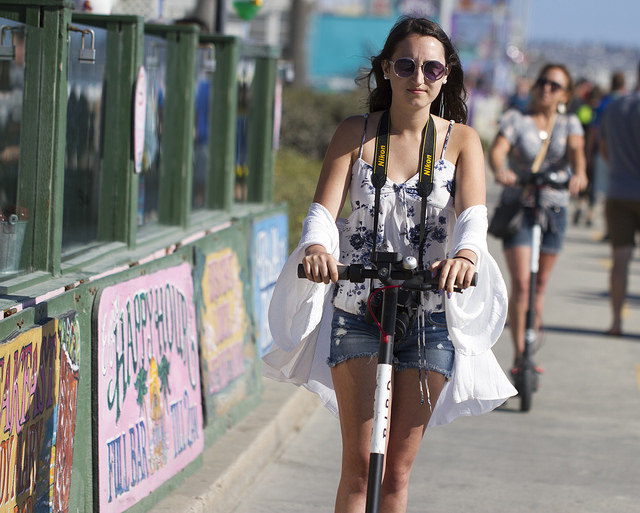How dangerous are e-scooters? The question has become pressing as they've proliferated all over the country, and researchers are scrambling for answers.
A new study published in the Journal of the American Medical Association [PDF] attempts to add some numbers to the discussion. But it doesn't do much to make the situation clearer.
The paper examined the number of e-scooter related injuries treated at two UCLA-affiliated emergency rooms in Santa Monica, California, which has been called the epicenter of scooters and e-bikes in the U.S.
Between September 2017 and August 2018, the two ERs treated 249 people for e-scooter related injuries. Of those, 15 were pretty serious -- requiring a hospital stay -- and two required intensive care. Some of the injuries do sound a bit gruesome, one person was admitted with brain bleeding and another with cervical spine fracture.
In addition, the study showed that there are a fair amount of young people using the scooters, even though that violates the Bird's policies. About 11 percent of those seen at the ER were under 18.
The JAMA article makes an argument in favor of helmet mandates.
But the scooter companies are pushing back. The study doesn't attempt to measure exposure in a thorough way, so it's hard to determine if the number of injuries recored should concern us. Bird corporate says "millions" of rides were taken in Santa Monica during the study period.
The researchers do note that during the same time frame, 195 bicyclists and 181 pedestrians were treated for injuries.
The most common injury was a head injury; about 40 percent of the injuries scooter riders had a head injury, compared to about 20 percent with fractures.
We asked Kay Teschke, a public health researcher at the University of British Columbia who was studied bike helmet issues, if she could help us make sense of the study. She agreed that it was hard to draw any firm conclusions.
"To understand scooter injuries, studies should allow comparison to other modes," she said. "Ideally, there would be an exposure denominator to allow calculation of the risk of injury, that is, the number of emergency department injuries per trip or per mile travelled. This could be compared to the risk of other modes of travel, including walking, cycling, driving, transit."
On background, Bird said the researchers did not contact the company for ridership data.
Requiring scooter companies to provide helmets might not be as simple as public health researchers imagine however. Boston experimented with a helmet vending machine for its bike share system, but it was short lived. It requires a lot of equipment and sanitation issues and is a difficult problem to solve. In the end, most cities abandoned the idea of providing helmets for bike share in part because bike share, anyway, has proven to be very safe.
Research shows that helmet requirements discourage bike ridership, which in turn can make biking more dangerous by reducing the safety in numbers effect.






